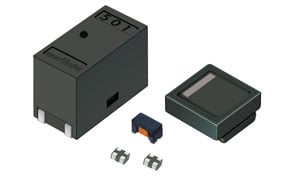Noise Suppression Products / EMI Suppression Filters / ESD Protection Devices
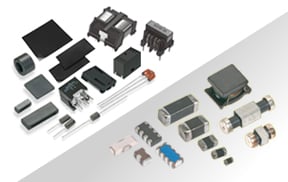
Noise Suppression Filter Guide
As automobiles adopt more electronic components, noise suppression becomes increasingly important in order to ensure safety.
Murata Manufacturing Co., Ltd. has been developing noise suppression products for the automotive market that take advantage of its proprietary winding technology, in addition to the magnetic materials and magnetic circuit design technologies that Murata has cultivated up to now in its general-purpose noise suppression products.
With the demand for lower fuel consumption brought on by environmental regulations and advances in driving support systems, the number of ECUs (electronic control units) per vehicle is increasing, and higher data transmission speeds are required by in-vehicle networks.
The in-vehicle LAN cables connected to these ECUs have a tendency to emit radio interference and are also susceptible to external noise, which means noise suppression is critical. In response to these factors, Murata has committed itself to the development of high-reliability common-mode choke coil (CMCC) products with outstanding noise suppression properties.
By utilizing differences in propagation characteristics in different modes, CMCCs have the ability to suppress only common-mode noise, with little effect on the signals transmitted in differential mode. To get the most out of this capability, Murata's proprietary design technology and advanced winding technologies are essential.

When long trucks and buses are considered in addition to ordinary passenger vehicles, in-vehicle Ethernet can require transmission cable lengths of up to 15 m. In-vehicle Ethernet standards also reflect the demand for performance improvements such as higher transmission speeds for non-compressed video transmitted from vehicle-mounted cameras and higher response speeds to minimize the number of retransmissions due to transmission errors.
The CMCCs that are widely used today satisfy the standard limit values specified for return loss (Sdd11) and insertion loss (Sdd21), but not for balance (Sds21), which may adversely affect transmission quality.
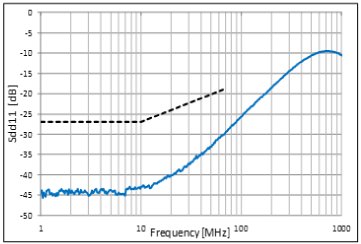
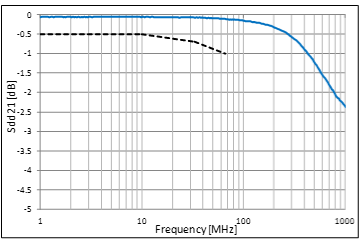
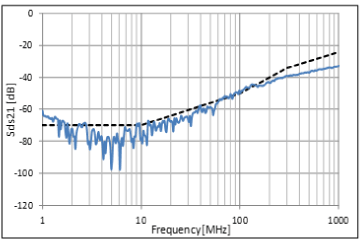
The CMCCs in widespread use for consumer Ethernet do not meet in-vehicle Ethernet transmission standards.
In addition to Ethernet, automobiles pack a large number of ECUs and information devices into small spaces. These electronics are governed by the CISPR25 automotive noise standard, which is far more stringent than the CISPR22 standard for general electronic equipment. There is particular concern about the effects of electromagnetic waves on radio waves (AM, FM, and TV) and on communications equipment (GPS, 4G-LTE, etc.).
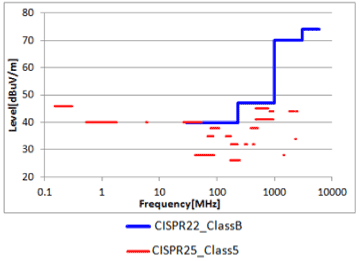
*A simple comparison is not possible since the measurement conditions are different. However, not only are the limit values themselves stricter, the measurement distance in the CISPR25 automotive noise standard is 1 m, which is shorter and stricter than the distance of 3 m used in the CISPR22 standard for general electronic equipment. Recognizing this automotive noise standard, the CMCC standard for in-vehicle Ethernet stipulates limit values for noise elimination characteristics (Scc21) that cannot be met by the CMCCs that are in widespread use for consumer Ethernet.
From the point of view of both transmission characteristics and noise elimination characteristics, the EMC problem must be solved using dedicated, higher-performance CMCCs.
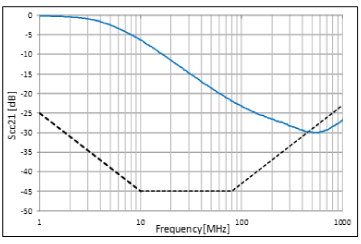
The CMCCs in widespread use for consumer Ethernet do not meet in-vehicle Ethernet noise elimination standards. (Dotted line: standard limit values; Solid line: general-purpose CMCC-DLW21SN491XQ)
The DLW43MH series of CMCCs supports BroadR-Reach®, which may potentially be the most popular in-vehicle Ethernet standard. The series achieves microscopic mode conversion characteristics thanks to Murata's winding technology and the high insertion loss characteristics of Murata's proprietary ferrite material technology.
This allows the series to exhibit highly effective noise suppression and immunity performance that meets in-vehicle Ethernet standards.
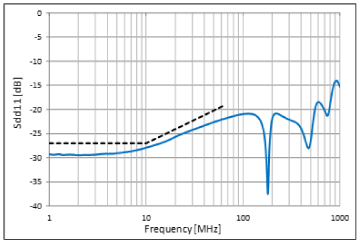
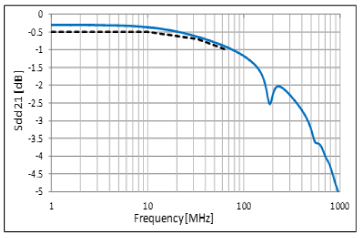
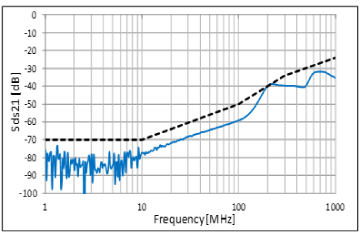
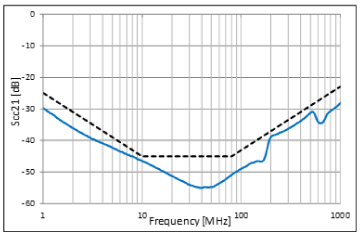
DLW43MH series specifications
Click here for more information
DLW43MH series rating table
|
Murata Part Number |
Common Mode at 100kHz |
Rated Voltage V(DC) |
Withstanding Voltage V(DC) |
Rated Current (mA) |
DC Resistance (Ω max.) |
|---|---|---|---|---|---|
| DLW43MH201XK2L |
200uH (-25% +50%) |
20 | 50 | 110 | 4.5 |
| DLW43MH201XK2K |
Operating Temperature : -40 to +105°C
The following are examples of specific circuits using the DLW43MH series.
It may also be used in conjunction with LC filters.
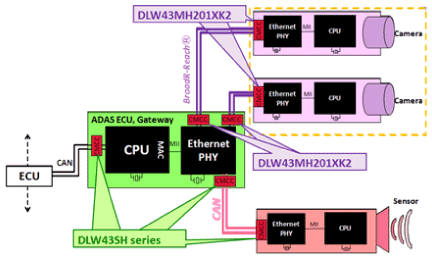
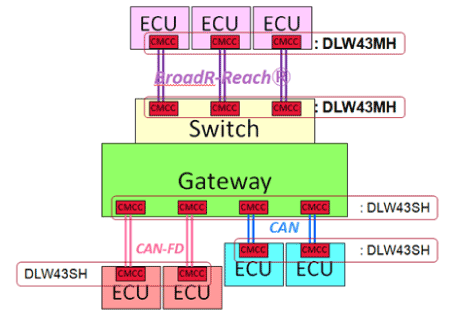
BroadR-Reach®, which has been deployed in OBD (On-Board Diagnostic) systems, in-vehicle camera systems, infotainment devices, the gateways that connect them, and even in power train and safety equipment, has the potential to grow into a networking standard that is indispensable to self-driving vehicles. To be able to meet a variety of noise suppression needs, Murata is developing CMCCs for in-vehicle Ethernet that are smaller, more temperature-resistant, more reliable, and better able to support high-speed transmissions, and is also working hard to enhance its lineup of other magnetic components.
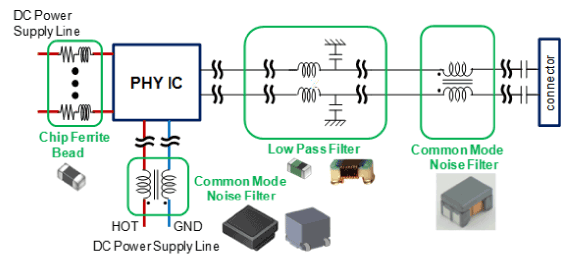
Noriyoshi Yagyu
Product Engineering Section 2, Product Engineering Department, EMI Filter Division
Murata Manufacturing Co., Ltd.
The information presented in this article was current as of the date of publication. Please note that it may differ from the latest information.

